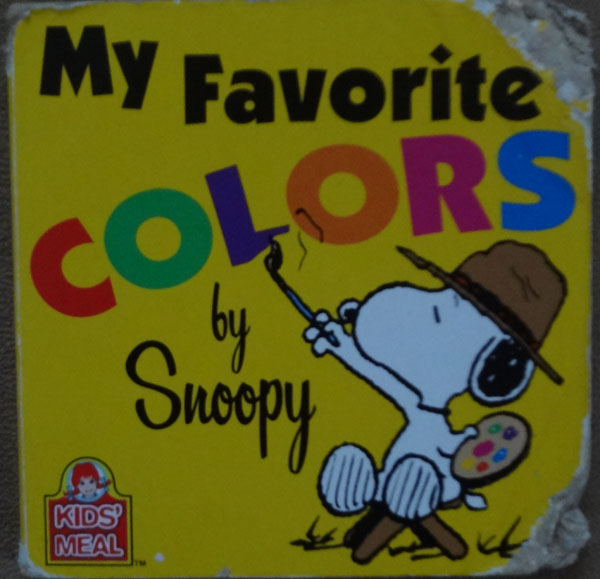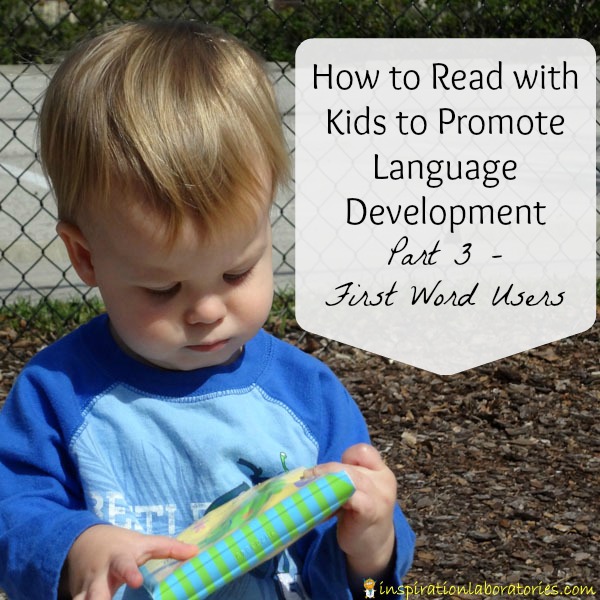How to Read with Kids to Promote Language Development – Part 3
Reading with young children promotes language development and literacy skills. Learn strategies for sharing books based on what type of communicator the child is from a speech-language pathologist. Part 3 of our series focuses on the first word user stage.
Part 1 – Discoverers
Part 2 – Communicators
Part 3 – First Word Users
Part 4 – Combiners
How to Read with Kids to Promote Language Development
Rachel is continuing to share strategies for reading to our children with us. Rachel is a speech-language pathologist (SLP) with training in children’s literacy and clinical experience in developing reading and writing skills in children.
Read part 1 of the series here.
Read part 2 of the series here.
We have been looking at what types of communicators our little ones are. Here are the stages that Rachel outlined in her first post.
- Discoverers: earliest stage of communication, child responds to environment through crying, body movement, and facial expressions. For example, child may smile in response to seeing a familiar face.
- Communicators: communicate by looking at you, making gestures, pointing, and making sounds.
- First Words Users: imitate words they hear or begin to use words by themselves. Initially say one word at a time using words that represent people, objects, and actions. Use one word to express an entire message
- Combiners: begins to use two-word combinations (i.e., “Want teddy.”)
Today, we will focus on First Words Users. Take it away, Rachel!
——————————————————————————————————————–
How to use books with a First Words User
- Read books with simple rhymes, predictable text, and a few words on each page.
- Connect stories with activities (theme books). For example, read a book about birds and then take a walk and look for birds, find animal books to read before and after a trip to the zoo, and talk about the book while at the zoo.
- Take time to pause and encourage your child to talk about the story. Cloze techniques (or fill-in the blank) are a good way to do this. “Run run as fast as you can, you can’t catch me I’m the Gingerbread ____.” You can also ask simple what, who, or where questions that the child can answer with single word (“Where’s baby?” “Bed”)
- Use stories to target concept words (in, on), yes/no, pronouns (him, her), letters, numbers. Then follow up the reading with a brief review of the concepts through a game or interactive activity. For example, after reading Where’s Spot? , do an interactive activity in which you hide child’s toy under, on, behind, etc.…. things and ask “Where’s ball?” **A side note on teaching letters: try to pair the letter name with the letter sound (for example B, says, /b/).
- Take turns with your child while reading and try to match your child’s turn length (i.e., number of words), pace, and interest
——————————————————————————————————————–
Thanks Rachel for giving us techniques for reading with our First Word Users.
Book Recommendations for First Word Users
Here are a few of Aiden’s favorite books when he was a First Word User.
 |
Skippyjon Jones 1-2-3 |
 |
Doggies – A Counting and Barking Book |
 |
Goodnight Moon |
 |
My Favorite Colors by Snoopy {We got this book from a Wendy’s Kids Meal.}The point of including it is to show you how the simplest book can do so much. Do you notice how chewed on it is?See my post about how I read it here. |
 |
A Splendid Friend Indeed |
 |
The Baby Bible Sing and Pray |
Rachel will be back one more time to talk with us about the Combiners stage tomorrow! {Read part 4 here.}
I’ll be sharing more of Aiden’s favorite books.
What are your favorite books to share with a First Word User?
Connect with Inspiration Laboratories on Twitter, Google+, Pinterest, or Facebook . You can also subscribe to posts by e-mail.
Linking up here.
Disclosure: Amazon links are affiliate links. See disclosure policy for more info.
This post was first published on December 1, 2011.


Leave a Reply